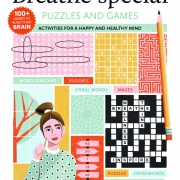Blog Posts – Info in a Flash
“There’s nothing like flash fiction to teach you how to write an engaging story ” Breathe Magazine tells readers looking for “activities for a happy and healthy mind”. Author Kit de Waal, judging a microfiction writing contest, says she looks for “a whole story that gives me depth and breadth, with a beginning, middle, and end, but not necessarily in that order.” The best microfiction, she adds, gets people talking and starts ideas in their heads.
While marketing blog posts are nonfiction, some of the tips offered by de Waal and other microfiction contest judges certainly apply.
- “Focusing on a single idea is a really good technique.”
When it comes to blogging, we at Say It For You firmly believe in the Power of One (one outcome, one audience, one writer, one client, and – one message per post, with a a razor-sharp focus on just one story, one idea, one aspect of your business. - “Pieces without a beginning, middle, and end don’t work.”
In business blog writing, for the opening, you may choose to present a question, a problem, a startling statistic, or a gutsy, challenging statement. Later, on the “back end” of your post, your “pow” closing statement ties back to the opener, bringing your reader full circle.
- “Editing and revising is the hard part, but it is important. Work with language and imagery.”
The second hardest part of blog writing is cutting your own work down to size, cutting out the non-essentials. - “Readers must be made to think and talk about what you’ve told them.”
For blogs, the “first take” message is crucial, showing online readers they’ve come to exactly the right spot to find the information they need. - “Choose three words at random and weave them into a story.”
Blog readers tend to be scanners, and searchers will select the most important words, the ones relating most directly to what they came online to find in the first place. Choosing those keyword phrases should hardly be random, instead being the result of research about your target audience. - “Find your ideas in weird sources.”
In order to create a valuable ongoing blog for your business, it’s going to take equal parts reading and writing.You need to keep up with what others are saying on your topic, plus keep up with your marketing and selling skills, as well as finding unusual or little-known facts that you can use to to explain your own (or your clients’) products, services, and culture.
“Flash fiction attempts to condense a story into the fewest words possible, telling big, rich, complex stories quickly and concisely, Catherin Sustana writes in ThoughtCo. Marketing. blog posts, while not fiction, are a means of providing readers with valuable information, and doing it “in a flash”.






Follow us online!